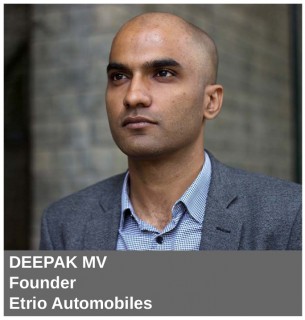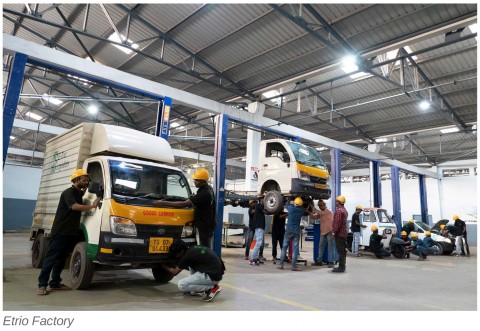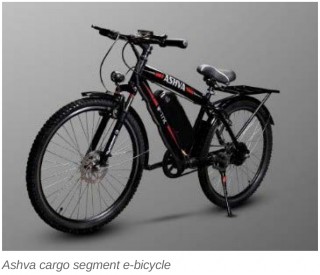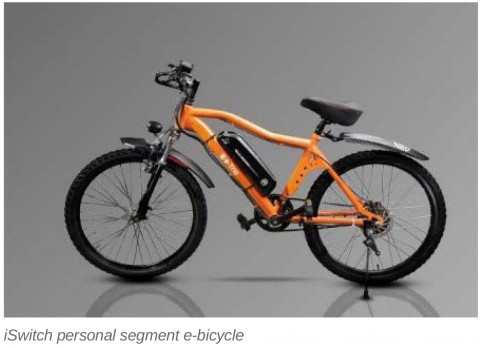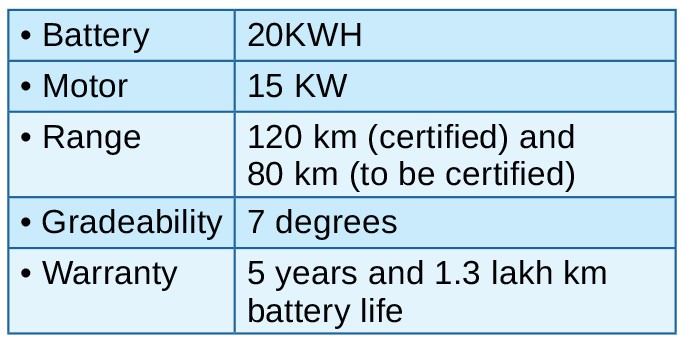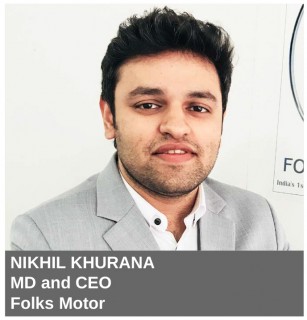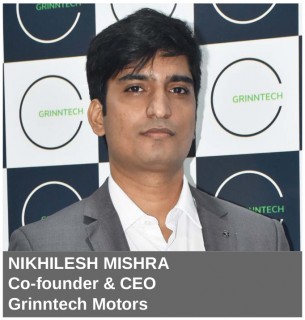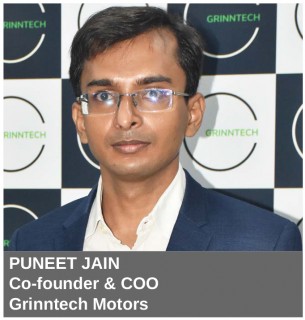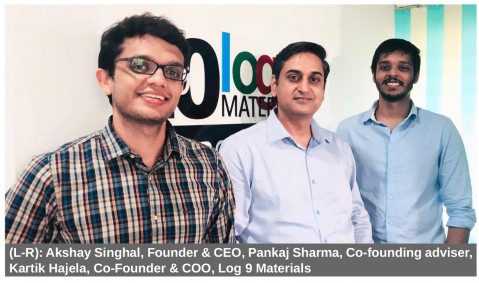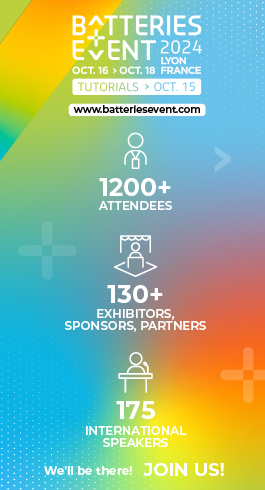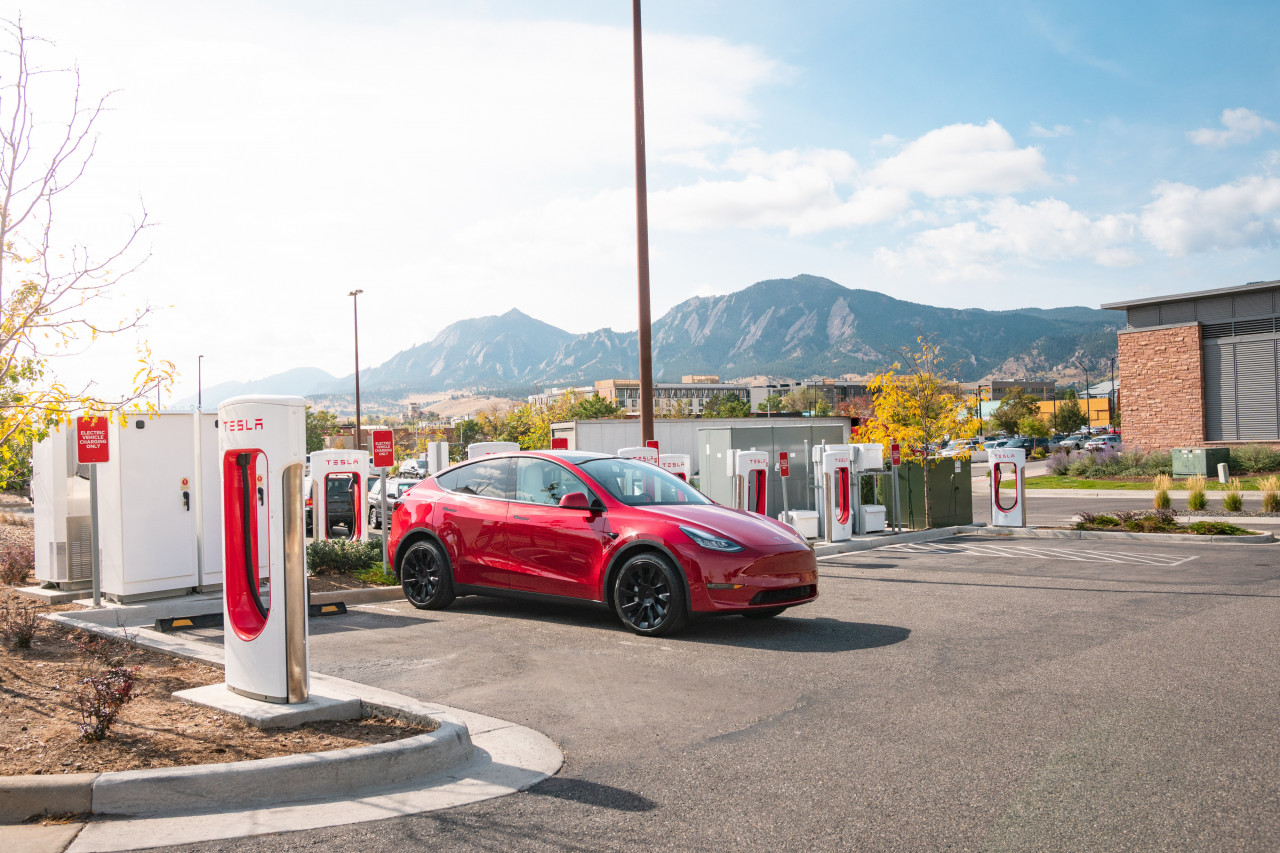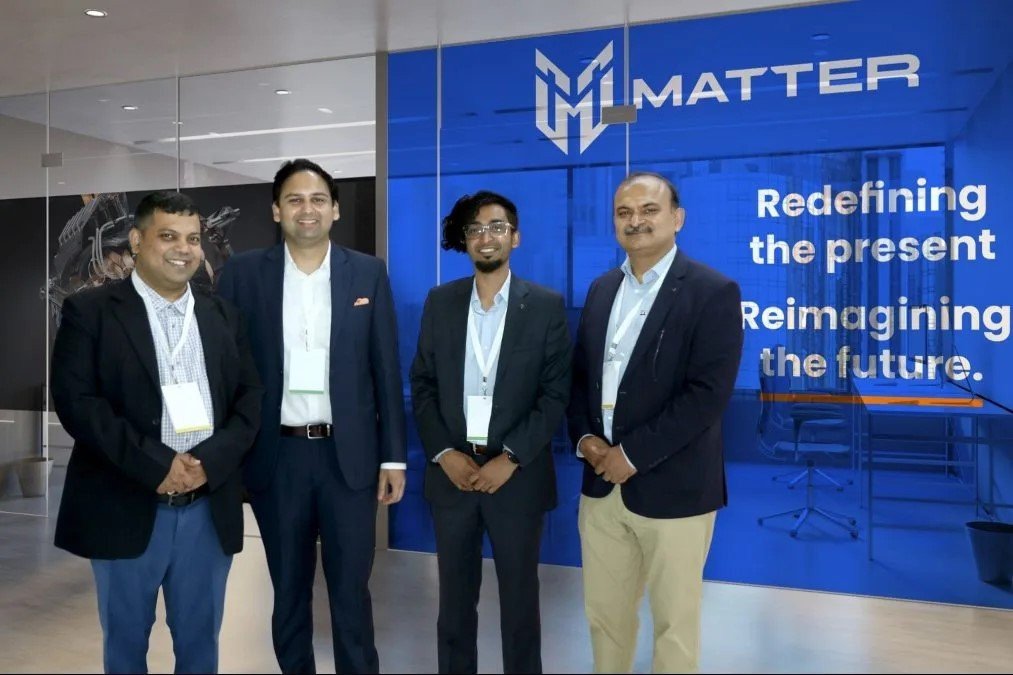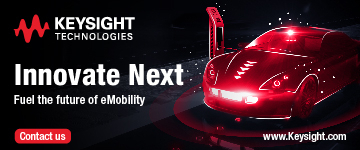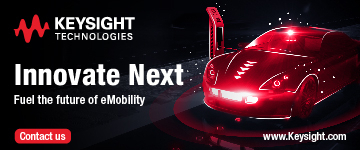'All humans are entrepreneurs not because they should start companies but because the will to create is encoded in human DNA.'
– Reid Hoffman, LinkedIn co-founder
India offers sizeable market potential as a nation leapfrogging into a tech driven, electrically mobile age. Market forecasts for EV growth hover around the 40+ percent levels, with a similar statistic for installation of charging infrastructure. India's diverse needs offer an equivalent number of business opportunities to its vibrant talent. GoI supports it through attractive incentives and motivational encouragement like 'Make in India for India', Atmanirbhar Bharat, and of course the subject of this feature – Startup India!
In our ongoing feature on Promising Startups, we cover the fresh talent that is taking our country into the information age. Through a series of written interviews, we attempt to highlight their achievements, challenges, pain points, and aspirations.India is the third largest startup country, so we have much to cover and much to look forward to.
Etrio Automobiles Pvt Ltd: A two-pronged approach to e-mobility
Founded by Deepak MV and Sathya Yalamanchili, Etrio Automobiles is an EV company with a vision to offer the widest range of EVs. The aim being to bring an affordable and accessible electric form of mobility to everyone.
What inspired you to dethrone ICE and what was the vision that started Etrio?
Every problem begets a solution and of late the ICE vehicles have been the root cause of so many problems. Where shared mobility has been touted as a solution for some of the problems, the last mile remains a challenge. Love for nature, the dislike for congested roads and the ray of hope that electric mobility offers drove us to dethrone ICE.Etrio has envisioned EV adoption with a unique two-pronged approach to build new EV products and to convert existing ICE vehicles into electric. Our starting point has been commercial vehicles. Etrio aims to be the leading EV player for intra-city logistics. Etrio was founded in 2017 with the vision - EV for All, to transform the environment, lifestyle and businesses. The company brings the widest range of EVs including two, three and four wheelers to drive affordable e-mobility. We aim to be the leading EV player for intra-city logistics. Today, our portfolio has EV products across a payload ranging from 75 kg to 750 kg including a new e-3W product range under the brand Touro; a new e-bicycle brand called Ashva and a retrofitted e-LCV (electric light commercial vehicle), the Tata Ace. While the e-3W and e-2W are yet to be launched, the e-4W retrofitted Tata Ace has been running successfully for a year in six major cities. Etrio has in a short span of time established credibility and gained trust of leading e-commerce and logistics players including Amazon, Flipkart, Big Basket, GATI, Lets Transport, Delhivery and many others.
Could you share some details about the founders of Etrio?
The team at Etrio is led by Deepak V who is the co-founder and CEO. An alumnus of IIM Calcutta, Deepak is a proven entrepreneur and an Auto Industry leader. He has over 15 years of experience in different domains including sales, finance and consulting in blue chip companies including Tata Motors and Axis Bank. Dr. Krothapalli currently serves as Etrio's CTO and is Professor Emeritus of Mechanical Engineering at Florida State University. He had founded five start-ups, has five US patents and over 200 scientific papers. The core team comprises individuals with more than 10 years' experience with leading companies in EVs, R&D, automotive service, power and telecom and pre-owned cars. The corporate office of Etrio is located at Hyderabad with its production facilities spread across Hyderabad and Haryana. The current production capacity is over 600 vehicles per month.
Tell us something about your retrofitted vehicles such as range, durability, servicing, charging, and some key specs.
Our first of its kind retrofitted e-LCV is being touted by many as the Ace of intra-city logistics as well as e-commerce companies. Etrio's best certified range is 120 km per charge and designed as a robust and durable vehicle, allowing us to provide a long warranty period of up to five years. A comprehensive service infrastructure is offered in all the regions in which we operate. We have circumvented the lack of infrastructure problem by providing an onboard charger compatible with the widely available 16 A socket. For further ease, we provide our partners with assistance on hub level charging infrastructure development.
Etrio's scientific approach towards retrofitting starts from a 150-point graded vehicle selection to refurbishing the chassis and load-body and replacing every other working component. This leads to a 7+ year's life extension on a second-life (5-8 years) vehicle. Etrio e-LCV has the following key specs.
The product has been tested in-house as well as with external clients for more than 1.3 lakh km, delivering an average range of above 100 km for a payload of up to 500 kg.
There is a huge interest in bicycles post COVID-19. How does your company feature in this new market segment? Could you share specs on Touro and Ashava?
Touro: Etrio offers a wide range of products for cargo and passenger segment under its new e-3W brand Touro. The product development started early last year has resulted in successful prototyping and setting up of a production line. The vehicles are currently under certification at International Centre for Automotive Technology (iCAT) and will be available for sale end of this year.
Etrio has been able to leverage its B2B client-base to generate a strong order book for Touro to the tune of 500+ units even before the launch. Additionally, it is in the process of identifying dealerships in key geographies in the country.
Ashva and iSwitch: Etrio aimed to design and manufacture an electric cycle with a modular base that can transcend across both the cargo and personal segment. Etrio introduced two brands to cater to the different segments. Ashva is for cargo segment focused towards delivery boys and iSwitch is for the personal segment.
Ashva means horse in Sanskrit, and the vehicle is designed to mimic the characteristics of a horse in safety, speed, durability and accessories, which are all equally emphasized. Key guidelines are: power delivery, long range, cargo storage. comfortable seats, adjustable suspensions, detachable battery, high discharge cell, brake cut-off, and charging cut-off.
The design philosophy was applied across all product categories created under the umbrella Touro to create a product superior in every aspect of design. The key USPs that differentiate eTrio from the rest is highlighted below for both Ashva and iSwitch
How would you comment on the vehicle scrappage policy being considered by the GoI? What challenges/advantages will it pose for Etrio?
Vehicle scrappage is something that the GoI has introduced post major debates and discussions, and is definitely for the greater benefit of the Indian masses. Vehicle scrappage solves multiple problems including that of pollution, congested roads and faulty vehicle related accidents. However, implementation of the same will incur major cost on the owners. Etrio retrofitting provides a major opportunity to the fleet owners to increase the life of their old LCV by up to seven years.
How would you comment on the vehicle scrappage policy being considered by the GoI? What challenges/advantages will it pose for Etrio?
Vehicle scrappage is something that the GoI has introduced post major debates and discussions, and is definitely for the greater benefit of the Indian masses. Vehicle scrappage solves multiple problems including that of pollution, congested roads and faulty vehicle related accidents. However, implementation of the same will incur major cost on the owners. Etrio retrofitting provides a major opportunity to the fleet owners to increase the life of their old LCV by up to seven years.
What has been the progress so far and what are the plans looking ahead?
Etrio has been able to distinguish itself with the following key achievements:
-More than three years of extensive R&D testing to build a strong technology platform
-First and only company to be certified in the retrofitted e-4W passenger and commercial segment
-Widest range of EVs catering to different customer segments and business application
-Commercialization started from December 2019 in the form of leasing of retrofitted Tata Ace
-Over 40 vehicles are successfully running across five cities with leading e-commerce players and logistics aggregators
-Order book of over 2000 units for its 2-, 3- and 4- wheeler EVs from leading companies
Folks Motor Pvt Ltd: Making an electrified middle path
xEV platforms can a play crucial role by providing both hybrid and electric driving through a generic xEV solution. It is all about coexistence of ICE and electric technology, taking a middle path to be known as Electrified Auto Sector.
Could you explain the Hybrid ReGeN Drive technology that Folks Motor is about to launch into the market?
Folks Motor, India's first hybrid electric retrofit car company, is introducing unique solutions through xEV (hybrid-electric) retrofitting in regular petrol/diesel cars by transforming them into xEVvehicles. As an xEV and green mobility solutions brand, we are renewing Indian mobility by inventing made in India hybrid-electric-connected car technologies and products with our base at Delhi-NCR.
We are the OEM of xEV retrofit car kit and are positioned as a technology-led OEM brand HyB (hybrid electric system as retro-fitment for cars) products, based on our patented technology platform. Our proprietary powertrain technology platform Hybrid
ReGeN Drive, where the patented technology regenerates electrical power when the driver slows down the vehicle during braking, and whenever the driver applies the clutch or changes gears which happen very frequently when driving in traffic conditions.
The technology platform is developed with support from Automotive Research Association of India (ARAI), where our independent authorized dealerships are set up as retail units for sale of HyB cars: xEV retrofitted cars (new and used cars retrofitted with xEV kit), aftermarket installation of HyBxEV Kit.
Our xEV system as retro-fitment for cars comes with brand HyB, which converts your present petrol/diesel car into an xEV hybrid-electric car (series, parallel, plug-in and EV mode) to drive on petrol/diesel hybrid and EV mode with internally recharged electric power using our proprietary technology platform, hybrid re-gen drive, delivering:
-40 to 60 percent increase in fuel efficiency
-30 to 50 percent decrease in running cost
-50 to 100 percent of your run with zero emissions
-Drive EV automatic mode within manual transmission i.e. electric mode, with top speed of 60/80 kmph
-An internally recharged battery range of 50/100 km (optional plug-in charging port available).
The complete platform focuses on improving internal self charging ratio for hybrid and EV mode, which involve unique powertrain integration and control strategy that led the Series-Parallel hybrid configuration to provide continuous charging for the batteries with minimalistic discharging in default hybrid mode operation and optimum discharging cycle under driving the EV mode, while the battery never drains below a significant state of charge before switching back to default hybrid mode.
Could you explain the Hybrid ReGeN Drive technology that Folks Motor is about to launch into the market?
Folks Motor, India's first hybrid electric retrofit car company, is introducing unique solutions through xEV (hybrid-electric) retrofitting in regular petrol/diesel cars by transforming them into xEVvehicles. As an xEV and green mobility solutions brand, we are renewing Indian mobility by inventing made in India hybrid-electric-connected car technologies and products with our base at Delhi-NCR.
We are the OEM of xEV retrofit car kit and are positioned as a technology-led OEM brand HyB (hybrid electric system as retro-fitment for cars) products, based on our patented technology platform. Our proprietary powertrain technology platform Hybrid
ReGeN Drive, where the patented technology regenerates electrical power when the driver slows down the vehicle during braking, and whenever the driver applies the clutch or changes gears which happen very frequently when driving in traffic conditions.
The technology platform is developed with support from Automotive Research Association of India (ARAI), where our independent authorized dealerships are set up as retail units for sale of HyB cars: xEV retrofitted cars (new and used cars retrofitted with xEV kit), aftermarket installation of HyBxEV Kit.
Our xEV system as retro-fitment for cars comes with brand HyB, which converts your present petrol/diesel car into an xEV hybrid-electric car (series, parallel, plug-in and EV mode) to drive on petrol/diesel hybrid and EV mode with internally recharged electric power using our proprietary technology platform, hybrid re-gen drive, delivering:
-40 to 60 percent increase in fuel efficiency
-30 to 50 percent decrease in running cost
-50 to 100 percent of your run with zero emissions
-Drive EV automatic mode within manual transmission i.e. electric mode, with top speed of 60/80 kmph
-An internally recharged battery range of 50/100 km (optional plug-in charging port available).
The complete platform focuses on improving internal self charging ratio for hybrid and EV mode, which involve unique powertrain integration and control strategy that led the Series-Parallel hybrid configuration to provide continuous charging for the batteries with minimalistic discharging in default hybrid mode operation and optimum discharging cycle under driving the EV mode, while the battery never drains below a significant state of charge before switching back to default hybrid mode.
What are the market segments Folks Motor is targeting and what marketing strategies do you have in mind?
Folks Motor will enter the market with HyB Cars and HyB Kits which would be available in five models in Phase-1 in the fiscal year FY20-21. This includes premium hatchbacks, entry-level sedans and SUVs, which are popular as personal cars, in the used car market and for cab fleets.
Our brand and product launch are scheduled for FY2020-21. Subsequently dealer meets will be held with identified potential partners to establish independent authorised dealerships for retail sales of HyB Car, HyB Kit and HyB Care. Initially the services would be promoted under our brand of Folks Motor in Delhi, Gurgaon, Noida, Mumbai and Bangalore regions.
The company's focus is on creating future auto retail model as an xEV car brand and initiating India's electric vehicle growth story with our HyB products that will play a pivotal role in terms of auto dealership's profitability by decreasing fixed cost and keeping optimum inventory.
The idea of HyB Cars Certified Pre-Owned Cars and HES with warranties came about when we identified an increase in demand for hybrid cars post the pollution scare in cities like Delhi. This was the case specifically in pre-owned or used car space with less supply of such hybrid car models. The pre-owned/used car market is the integration in our business model, where customers appreciate the cars with low running cost options like with CNG Kit and automatic transmission models.
Our HyB, HES retro-fitment converts a regular car into xEV car giving both low running cost like CNG without the disadvantages of the same and automatic driving mode within manual transmission. We thought of mating these regular pre-owned cars with HES to be sold as HyB Car. Thus, making a unique marketing model in Indian auto market and redefining OEM Operating model by turning our brand Folks Motor, India's 1st Hybrid Electric Retrofit Car Company.
What is the kind of investment have you received and who are your funders?
The company is driven by real estate-based family office of promoter-led investments and various banking institutions with commitments of `100 crore as the commercial investments to develop our products and solutions across leading multi-brand models in varied segments.
Our investments are focussed towards technology development and retail marketing, with our proprietary technology platform Hybrid ReGeN Drive, components are getting sourced through credible Tier-1 supplier partners, and independent dealership network is being set-up by established auto retail groups to set up customer touch points.
In 2016, various industry leaders and certain institutions like Napino Auto and Electronics and Indian Angel Network came on our advisory board to bring in guidance, experience and certain resources for our growth and long-term vision enhancement.
The company would expand the products range across 20 leading models in varied segments in the next three years with the expanded dealer network and would make investments of around ₹500 crore in next three years which would be raised subsequently in the form of both equity and debt.
Nikhil Khurana, who has been a part of many central and state-level EV policy led workshops, actively participated in a number of State and national level EV policy discussions alongside the government such as 'Champions of Change' initiative organised by NITI Aayog and continues to work closely with industry bodies and associations to spread awareness of e-mobility and developments in the field.
Could you elaborate on your vision to influence the mobility sector and the type of challenges you anticipate?
India's mobility sector needs to be transformed towards clean mobility with an emphasis on energy utilization and distribution within mobility solutions. We plan to target the electrification of economy passenger cars constituting 12 percent of the Indian auto sector, which is the second largest in volume after two-wheelers and top polluting as well as fuel-wasting vehicle category. Our company has a clear focus on being a xEV car brand and a hybrid-electric retrofit car company, introducing xEV retrofit cars, aftermarket retro-fitment solutions and services across value chain.
Mobility in India covers a wide range of audience and caters to differentiated segments of the society. It needs to be addressed with a holistic approach and leapfrog to be sustainable across the value chain delivering a high value proposition at scale.
The Indian EV ecosystem offers great opportunities in all the vehicle segments but the challenge is to build and offer indigenous technology solutions which address the customer expectations from a desirable vehicle. The ecosystem narrative needs to be changed from electric vehicle or BEV's to electrified vehicle or electrification, specifically in the case for passenger cars and to be understood how xEV platforms can a play crucial role by providing both Hybrid and Electric driving through a generic xEV solution. It is all about coexistence of ICE and Electric Technology, taking a middle path to be known as Electrified Auto Sector.
Do you also offer finance, as per the Folks Finance logo?
Folks Finance is an upcoming initiative known as Folks Motor (P) Limited, as an NBFC based lending platform to enable EV revolution with interests to provide financial lending services under retail financing to electric vehicles and retro-fitment customers across all segments. The Corporate Lending portfolio is in the segments of project financing, bill discounting, working capital requirement in loan-against-property and structured credit to SME's and EV dealers or component manufacturers.
Grinntech Motors & Services: Managing batteries to promote green mobility
Grinntech is dedicated to scaling up of electric vehicles and renewable energy storage by developing the battery pack's electro-mechanical assembly and battery management system for lithium battery applications.
What was the motivation to start Grinntech?
The founders of Grinntech, Nikhilesh Mishra and Puneet Jain decided to start a technology and product company when they were studying at IIT Roorkee. They aspired to make a career in electric vehicles, seeing that ICE technology was at the beginning of its decline. Technology backed by renewable energy was the bedrock upon which Grinntech was founded and since then it has been the main pillar on which the company has been evolving and growing. India will never miss the EV wave and with that mindset, the seeds of Grinntech were sown and the company was started in 2013.
How much have you invested in your startup and who are your funders?
We have secured $2 million investment out of which $1 million has already been used in the past 5-6 years to build a strong base for the company. The investors are veterans who include V Sumantran and Lakshmi Narayanan and they are part of the Grinntech Board of Directors along with the founders Nikhilesh Mishra and Puneet Jain.
Grinntech develops a lithium battery technology and BMS. Could you explain that further?
Grinntech is a start-up that is engaged in design, development and manufacture of Lithium-ion batteries, energy storage systems and solutions, ready for the anticipated wave of electric vehicle mobility in India and across the globe. Incubated at the highly-acclaimed IIT-Madras Research Park, Grinntech has developed a range of battery platforms suitable for e-2W, e-3Ws, e-LCVs (light commercial vehicles) including cars and tractors. Our packs have high energy density, which reduces the overall size of the battery. Our batteries endorse safety, and the thermal conditions are designed for Indian temperature conditions. Our BMS is a result of superior Qualcomm connectivity technology and Grinntech's capability in developing state-of-the-art batteries.
Will GoI's new directive permitting sale of EVs minus the battery be beneficial to your business?
It is an interesting move by the government's Ministry of Road Transport and Highways (MoRTH) to delink the sale of batteries from EV sale.The batteries can be sold separately by the manufacturers or energy service providers. This paves the way for battery swapping / leasing, where EV owners can rent the charged batteries for a predetermined cost for a contract period.
This move is going to create opportunities as people will look at EV options as the initial acquisition cost of EVs without batteries will be lower. Swappable battery stations are going to boost the opportunities for new business and manufacturers of battery packs can surely benefit from this change in government legislation.
However, the government has to back this move by improving infrastructure facilities along with creating provisions for battery swapping and/or leasing. The separation of batteries from EVs should reflect in GST as well; as battery swapping and charging comes under different taxation brackets.
What is your USP in this technology that sets you apart from competition?
Our batteries are designed on the four cornerstones of Quality, Durability, Performance and Reliability, making us a market differentiator. This can be seen in our products like Robin-72 which is designed with Patented BMS technology with a BMS functionality and computing power of over 7.5 times its competitors. At 300Wh/litre, ROBIN-72 has an energy density which is over 35 percent higher than its peers. On the life expectancy side, we are giving up to five years of warranty, which is much higher than the average years. All our batteries are waterproof having achieved an IP-67 rating.
Enter your text here ...
Tell us about the announcement that transforms Grinntech to a funded commercial Enterprise.
The EV eco-system is transforming itself from lead-acid batteries to Li-ion batteries. It is Grinntech's dream to create a technologically advanced Li-ion battery product line that is suitable for Indian conditions.
It took eight long years for us to get into the production phase from R&D phase, and the journey was not a cake walk. The inflection point of our journey was when we bagged the second runner-up in the prestigious Qualcomm Design in India Challenge (QDIC-2019).
What came out of this exercise is a product (BMS) which is way ahead of the current generation of connected battery products available in the market. The complete IPR of this developed product resides with us and we believe this is the biggest differentiator for Grinntech.
Having evolved energy storage solutions through years of dedicated R&D, Grinntech's new facility will manufacture a highly efficient 2W battery called Robin-72 and an ultra-reliable 3W battery named Shikra. The facility will also manufacture Pintail an IOT-enabled 2-W starter battery and the Falcon, a larger battery suited for tractors and light vehicles. The modular production in our factory layout will allow for easy scaling-up, as and when the demand grows.
In your opinion, how much do you feel EV adoption in India will be accelerated through the high-tech batteries offered by Grinntech? How much of a part will charging infrastructure play here?
The EV market in India is very small at present. This year it is expected to be around 1.54 lakh e-2W, majority of which run on Li-ion, and 90,000 odd e-3Ws, a majority of which run on lead-acid battery. But this market is expected to grow steadily between 6-8 percent per annum. Other applications like car, bus and LCV are currently in the early stage of development. We are working with many of these OEMs and in due course of time the products will hit the market.
Transition to electric vehicles will happen gradually starting with two wheelers, followed by three wheelers, fleet operators, commercial vehicles and passenger cars. As per various market studies, it is estimated that in India, between 25 – 30 percent of vehicles should be electric by 2030.OEMs, in line with these estimations are planning their product line-up and avenues for transition. By 2023, 9-10 percent of two wheelers are expected to be electrified.
Setting up a wide EV charging infrastructure is one of the biggest challenges in India. In the coming years we foresee a lot of private-public partnership to be active in this domain.
How ready are you for the future, with your innovative product range and sophisticated IoT-enabled BMS systems? Could you tell us about your goals?
Our range includes products that are IoT enabled with compact design and high energy density, NBIoT ready and with algorithms that endorse high accuracy and personalization.
Our BMS predicts the 'state-of-charge' or SoC with an accuracy of up to 99 percent. The data analytics on the server enables us to predict the health of the battery and predictive maintenance alerts. Carefully engineered thermal solutions prevent the battery into going in a thermal runaway. The battery pack is also capable of eliminating the possibility of any explosion.
Our IoT enabled batteries help us capture the usage patterns with the help of analytics and store the data for future predictions. With data garnered from the backend analytics we get a personalized performance diagnosis and usage behaviour.
Our goal is to give customized solutions with better cost-to-'value ratio. We want to support the 'Make in India' campaign and localize production to the maximum extent possible and manufacture indigenously and deliver without compromising on the quality.
Log 9 Materials: A clean-er energy generating technology
A car of the future that needs neither fuel nor a re-charge of its battery.
(Interview with Akshay Singhal, Founder & CEO, Log 9 Materials)
What was the inspiration behind Log 9 Materials?
I started working in the nanotechnology field since 2013 while doing my Bachelors at IIT Roorkee, under the guidance of my grandfather Vipin Kumar (who has been working in the field on nanotechnology for over three decades at National Physical Laboratory, New Delhi) and Prof. Dr. Indranil Lahiri (who later became my PhD supervisor). In 2014, for the first time I came across Graphene and was both intrigued and fascinated by the superior qualities possessed by the material and its vast potential applications. I quickly realized that Graphene can become the next big thing in the domain of material science and nanotechnology. While working on several Graphene projects in college with some of my batchmates, I was able to produce multiple variants of Graphene in the lab and optimize processes for scaling production. This gave me confidence, and I developed an understanding that by combining the superlative properties of Graphene with the knowledge of nanotechnology, the future of humanity can be transformed for the better. The grasp on the subject and foreseeing the potential benefits of this 'wonder material' is what ultimately motivated me to launch my own Graphene nanotech start-up Log 9 Materials in December 2015.
What is the kind of investment you have received and who are your funders?
So far, Log 9 has raised multiple rounds of funding. In 2017, we received our first seed funding from GEMS Partners. In 2018, we raised Pre Series-A round of funding of $436k from a clutch of angel investors including Metaform Ventures, Hemant Luthra, and GEMS. In 2019, we again got Series-A funds amounting to $3.5 million from reputed VC firms like Sequoia Surge and Exfinity Venture Partners.
Would you briefly outline the working of Log 9's aluminum-air fuel cells?
The aluminum-air fuel cells developed by Log 9 is a novel technology/solution that aims to revolutionize the face of electric mobility in our country. The aluminum fuel cell (AFC) technology offers almost up to five times higher power range than traditional Li-ion batteries can offer. At the same time, it is very cost-effective, easy-to-use and hassle-free as it doesn't require repeated recharging as with conventional battery systems. The system works with aluminum metal as anode, oxygen (air), water as electrolyte and two Graphene-made cathodes on either side. The cassette-like Graphene layers selectively filter out the carbon dioxide in air, and let in oxygen. When water enters and combines with oxygen, the subsequent electrochemical reaction turns aluminum into aluminum hydroxide, thus generating zero-emission, clean energy. Evidently, these fuel cells are running on a refueling mechanism, and harnessing the combined power of aluminum and Graphene to usher in a 100 percent recyclable energy generation mechanism.
What about charging the battery?
As mentioned already, the aluminum fuel cells developed by us never require charging, but can rather be replaced (within a few minutes) with new aluminum fuel plates after which the vehicle runs for approximately 1000 kilometers. Thus, it helps in saving billions of dollars in terms of charging infrastructure.
Could you explain the role of Graphene and tell us about your core expertise? What patents have you filed?
Graphene, an allotrope of Carbon, has been hailed widely as the 'wonder material' for its strikingly superior properties as compared to other newly discovered nanomaterials. As we know it, Graphene is a super-strong, flexible and stable material; it is an excellent conductor of heat and electricity and also has superior selective filtration and absorption qualities. Since its discovery, the material Graphene has found effective applications in many fields such as infrastructure, bioengineering, optical electronics, healthcare, ultra-filtration, and renewable energy, to name a few.
However, there are still a few challenges vis-à-vis Graphene usage for the advancement of science and humanity, which is not allowing the material to reach its full potential. For instance, the cost of quality Graphene production is quite high in our country till date, and the production volume is also quite limited and inadequate. Further, while in the last decade a lot of research is ongoing across the globe with Graphene, not many are focusing on solving real-life, immediate problems faced by mankind with Graphene-based products or technologies.
In view of the above challenges, Log 9 Materials, from day one, has emphasized on commercialization
of Graphene nano-technology based solutions, and on bringing Graphene from labs to the marketplace. This is what eventually became our startup's core area of expertise. We believed that the superlative properties of Graphene could be leveraged optimally, but that it was important to manufacture Graphene on a large scale to make it commercially viable.
We have registered several patents in graphene manufacturing and graphene synthesis, while attempting to economically manufacture certain customized graphene derivatives. Till date, we have been working consistently to develop cost-effective processes not only in terms of manufacturing the material but also incorporating it in various product lines and making these products/solutions efficient and market-ready at a great pace.
As of date, Log 9 has filed more than 20 patents, most of which are related to Graphene nanotechnology and its practical-life applications.
What supply-chain is in place to source the necessary materials?
So far, all of the raw materials used in our products are sourced from within India; we have tied up with various suppliers across the country for the procurement of these raw materials on-demand.
How does the aluminum-air fuel cell stack up against a lithium-ion battery or other RE energy generation in terms of safety, sustainability, cost and other criteria?
AFC technology uses the most abundantly present materials in the nature like aluminum and carbon (in the form of Graphene) as the core materials, and the system/processes involved herein produces zero waste and it is also highly sustainable and scalable. The cost of the technology is similar to IC Engines; however, it comes minus the hassle of long charging times or range anxiety. Since the energy generated through aluminum fuel cells is clean (does not release harmful and polluting toxins into the environment) and the metal (aluminum) used is entirely recyclable, this technology offers a huge advantage in terms of elimination of negative footprint on environment. Besides, the whole system consists of around 60 percent water and therefore it is believed to be much safer (less prone to hazardous reaction, etc.) as compared to Hydrogen fuel cells or traditionally used Lithium batteries.
Please explain the terms 'circular and recyclable energy source.'
In our aluminum fuel cells, the aluminum hydroxide created through the electrochemical reaction can be re-smelted back into aluminum using clean energy. It is a continuous cycle wherein naturally-sourced aluminum goes into the aluminum fuel cell, generates energy while getting converted into aluminum oxide, and this oxide is again converted back into aluminum. Since aluminum metal is recyclable, there is no need for disposal and thus the whole process is waste-free and eco-friendly. This is the reason, the terms 'circular' and 'recyclable' are used for describing our technology. Also, since this is an energy generation system (and not energy storage system), we are using the term 'energy source' in this context.
Could you enumerate the uses of your battery systems?
Unlike traditional batteries, the aluminum fuel cells developed by Log 9 generate energy continuously, and do not store energy at all. These aluminum-air fuel cells can be used to power electric vehicles as well as they can be used at factories or homes for powering stationary devices like generators (that require electricity to operate).
Could you elaborate on your vision to transform the energy sector? Do you anticipate any challenges?
Going ahead, Log 9 Materials wants to encourage and support the widespread electrification of vehicles across the country, without the need of incurring billions of dollars in trade deficits with China for Li-ion imports, with the help of our flagship aluminum fuel cell project. Also, as our country is one of the largest global producers of aluminum, large scale adaptation of this technology would ensure India becomes a net importer of energy in the long run.
Log 9 Materials is pioneering a 100 percent green and recyclable aluminum economy, aiming to work with aluminum manufacturers to source aluminum and generate aluminum fuel cells in-house that will be distributed through a network of fuel distributors and then either integrated into electric vehicles by concerned automotive OEMs, or packaged with a partner for stationary power usage.
While Log 9 has already positioned itself as a Graphene nanotech startup in India, in the next five years, we aim to garner international recognition and fame, while continuing to rapidly develop path-breaking Graphne-based products and solutions for immediate as well as long term benefits of mankind. We will be also looking at launching sub-systems or offshoot technologies as standalone product/innovation offerings in the market so as to maintain profitability and accelerate scalability for our company.
What are your plans going ahead? What is the kind of scale that Log 9 Materials is looking at in five years?
The modern-day society is in a transition from fossil-fuel based economies to embracing clean energy alternatives so as to minimize environmental pollution. Thus, an urgent need has been felt in recent years to adopt clean energy generation technologies rather than mere energy storage solutions. Hydrogen Fuel Cell is one such solution for energy generation that has existed for many years, but also poses challenges such as exorbitant cost and safety issues.
This is where aluminum-fuel cells emerge as the best solution in our opinion, not only addressing the issues with traditional Li-ion batteries, but also overcoming long-term obstacles faced by Hydrogen Fuel Cells. Aluminum-based energy systems have gained a lot of interest amongst the scientific community in recent times due to high energy density (theoretical up to 8000 Wh/Kg), low cost (almost 1/10th as compared to Hydrogen Fuel Cells) and being the safest and more affordable choice. We sincerely believe that once optimized and rolled out on a large scale and after being adopted by the masses, the AFC technology developed by us can revolutionize the clean energy and electric mobility ecosystem in India and across the globe, while adding to convenience and reducing the cost and range anxiety for customers, and finally acting as a game-changer towards building a more sustainable world by building upon eco-friendly materials.
As with any new technology, AFC will obviously face initial resistance to change and skepticism; however, we believe that since the benefits are far-reaching over the long term, it would be widely accepted. Another challenge that we anticipate in terms of mass deployment of these fuel cells is the availability of capital and quantifiable support from the government, mostly due to limited awareness for an indigenous and sustainable technology like this one.



